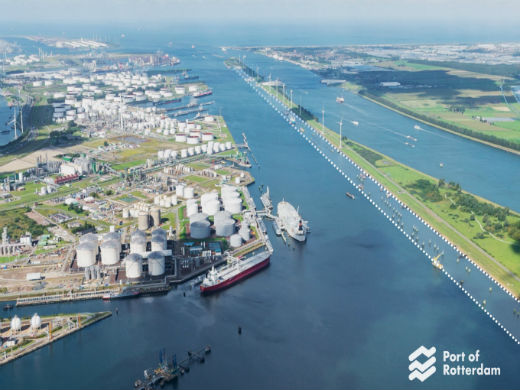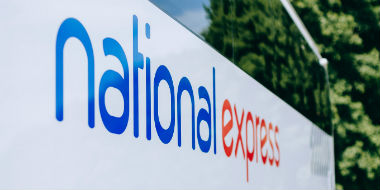Internet of Things
Turning Rotterdam into the “World’s Smartest Port” with IBM Cloud & IoT
January 31, 2018 | Written by: Vincent Campfens and Charles Dekker
Categorized: IBM Cloud | Internet of Things | IoT
Share this post:
At the port of Rotterdam, Europe’s largest port by cargo tonnage, we want to be the smartest port in the world. Part of that journey is our digital transformation initiative with IBM.
With more than 85% of all globally traded goods having travelled on a ship at least once during their lifecycle, ports play a key role in the global and local economy. We employ 90,000 people and contribute 10.5 billion euros, which is 3.3 % of Dutch GNP. And despite heavy competition on the world scale, we are recognized for our service quality and world class connections to the rest of Europe. In 2017, the World Economic Forum named Dutch port infrastructure the best in the world for the sixth consecutive year.
For centuries, the shipping industry has embraced a tremendous pace of innovation and change in the transition from sail to steam and with advances in technology such as radio and radar. Now the industry is embarking on its latest innovation journey, connected shipping. Much like the driverless car in the automotive world, connected ships operate autonomously and communicate with each other to avoid the risk of a collision. At the Port of Rotterdam, our goal is to host autonomous ships by 2025.
Digital Twin prepares for connected shipping
To prepare for this future milestone, we are actively enhancing our entire 42-kilometre port area, from the City of Rotterdam all the way into the North Sea, with IBM Internet of Things (IoT) technologies and IBM Cloud. Our digitization initiative has many components, all of which contribute to us becoming the world’s smartest connected port.
Using IBM IoT we will create a digital twin of the port – an exact digital replica of our operations that will mirror all resources at the port of Rotterdam, tracking ship movements, infrastructure, weather, geographical and water depth data with 100% accuracy. This part of our digitization initiative will help us test out scenarios and better understand how we can improve efficiencies across our operations, while maintaining strict safety standards.
We process more than 140,000 ships every year and coordinating the berthing of each vessel is a complex task that involves multiple parties and must be executed safely and securely. It can take many hours. With a new digital dashboard, we will be able to view the operations of all parties at the same time and increase volume and efficiency of shipped goods that pass through the port. In fact, shipping companies and the port stand to save up to one hour in berthing time, which can amount to about $80,000 US dollars in savings for ship operators and enables the port to dock more ships each day.
 Predicting Water and Weather Conditions
Predicting Water and Weather Conditions
We are starting to use IoT sensors, Augmented Intelligence (AI) and smart weather data, orchestrated by IBM and other partners to measure things like the availability of berths and other vital statistics. For example, accurate water (hydro) and weather (meteo) data will allow shipping companies to predict the best time to enter the port of Rotterdam by identifying the most favourable conditions. The Weather Company, an IBM company, will provide us with accurate weather data and the IBM solution will also analyse water and communications data.
Having access to data about air temperature, wind speed, (relative) humidity, turbidity and salinity of the water plus water flow and levels, tides and currents, enables us to better predict visibility on a given day, helping us calculate clearance heights for ships. In addition, by predicting water conditions, wind direction and speed, we will be able to determine how smooth a ship’s entry into port is likely to be. This data will also have a significant positive economic impact on shipping costs. Calm water and weather conditions allow for lower fuel consumption rates, facilitate cost-effective per-ship payloads and help ensure the safe arrival of cargo.
Ship-Shape 3D Printing
We have established a new R&D facility called the Rotterdam Additive Manufacturing LAB (RAMLAB) in our shipyards that is comprised of 30 partners. We believe that quality industrial spare parts should always be available wherever they’re needed, whenever they’re needed, and at a competitive price. This is the first 3D printing field lab that caters specifically to seaports and shipping companies and has the potential to enable wide-scale availability of certified metal shipping parts. IBM cognitive IoT technology is being infused into this production process, which uses a robotic welding arm to apply high-quality metal layer-by-layer to create ship components such as propellers, on-demand and faster than ever before. Where a traditional manufacturing process of a specific ship’s component usually takes six to eight weeks, we anticipate it can now be done in just 200 hours.
Digital Dolphins
With IoT, we see endless and game-changing possibilities. In another component of the IBM IoT Connecting Services-enabled digitisation projects, we are putting in place a number of “Digital Dolphins,” smart quay walls and sensor-equipped buoys that support ship-to-ship cargo transfer and generate time-stamped data about their status and direct environment. These digital dolphins will provide insights into the condition and utilisation of a berthing terminal and the surrounding water and weather conditions, enabling port operators to identify the optimal time for ships to dock, and where and when they can do so. Machine learning will be applied to learn from data patterns so that port operators will be able rely on 100% accurate, real-time data about the port’s infrastructure. This data will be used at the port and shared with those using it.
Full steam ahead!
That’s what the future of our industry looks like – and we’re building it, drawing on our pioneering heritage, our relationship with IBM and its global ecosystem of IoT partners, including Cisco, collocated at IBM’s global IoT headquarters in Munich, and IBM business partner, Axians. We’re on course to truly transform the operation of the port and add significant value to the people and other ports the Port of Rotterdam serves. Full steam ahead!

Business Consultant, Internet of Things, Smart Infrastructure, Port of Rotterdam
It’s a Long and Open Road Ahead for Bus & Coach Travel
As one of the oldest forms of public transport, the bus occupies a special place in our hearts and lives. For more than a century, these vehicles have carried us to work, school, holiday destinations and festivals. But bus and coach companies can hardly afford to be sentimental nowadays. Technological innovations are creating new models […]
How a Hybrid Multicloud Strategy Can Overcome the Cloud Paradox
Public clouds have a lot to offer. Public clouds bring about agility, elasticity, and speed, which make a company’s IT shop become a lot more responsive to the needs of its business. By shifting workloads to the cloud, businesses can make great strides in reducing costs and boosting productivity. This allows them to focus on […]
Q&A with Hillery Hunter, VP & CTO IBM Cloud on IBM’s Software Transformation
A couple of weeks after having closed its landmark acquisition of Red Hat, IBM is announcing new cloud capabilities that will transform the way clients do business and accelerate their journey to the cloud. This includes: IBM Cloud Paks, Red Hat OpenShift on IBM Cloud, Red Hat OpenShift on IBM Z and LinuxOne, and Consulting […]


